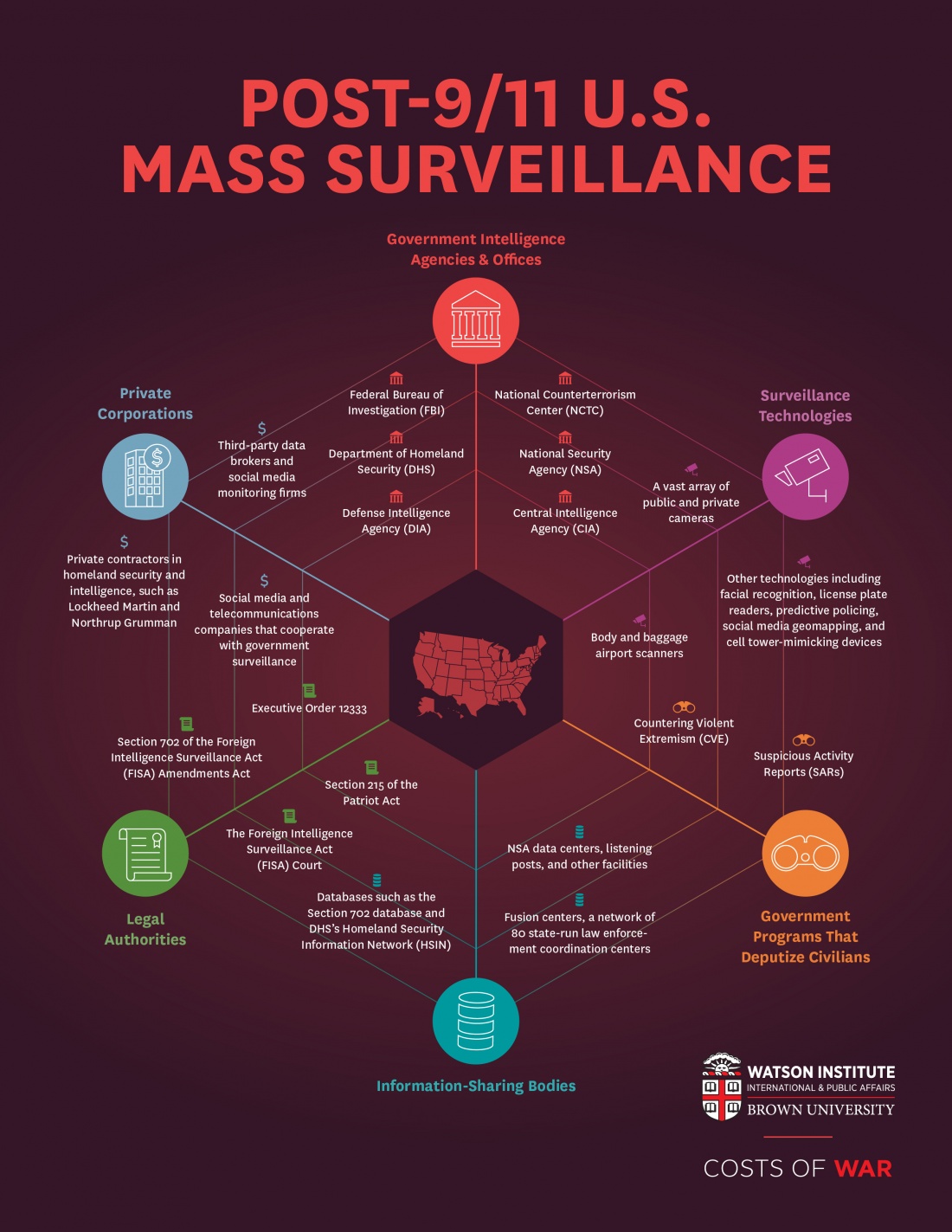Surveillance

The events of 9/11 have been used to dramatically expand the government’s mass surveillance authorities and weaken Constitutional protections.
This post-9/11 expansion has built on a much longer history of slavery, colonial occupation, and longstanding racism, as well as wartime spying and the War on Drugs. Yet it is also markedly different from what existed before, in both its technological capacities and its scale and breadth. The pervasive fear, Islamophobia and xenophobia, weakened civil liberties protections, and exponentially increased funding of the post-9/11 era enabled the unprecedented breadth and scale of surveillance reigning across the United States today.
While “mass surveillance” is often used to refer to government spying, today it involves a complex grouping of federal agencies, local police, private companies, and even members of the public. Mass surveillance programs allow the U.S. government to warrantlessly and "incidentally" vacuum up Americans' communications, metadata and content, and store their information in data centers and repositories such as the database authorized by Section 702 - a provision up for reauthorization in 2023. Federal agencies also increasingly obtain data from private companies and track Americans using facial recognition, social media geomapping, and other technologies.
Mass surveillance has intensified the criminalization of marginalized and racialized groups, from Muslims and Arabs to Latinx immigrant communities to Black and Indigenous organizers, and has increasingly targeted protest movements such as Black Lives Matter and the movement to stop the Dakota Access Pipeline. With the rise of what the U.S. government portrays as competition with China, Asian Americans have also been increasingly targeted. Mass surveillance has also facilitated the tracking, incarceration, and deportation of thousands of migrants, most of whom were guilty only of the civil offense of crossing a border without government permission. The post-9/11 state’s focus on racialized groups may have ill-prepared it to address rising white supremacist violence.
Building a set of institutions and technologies capable of overseeing both mass movement and minute details of individuals’ lives has broadened the powers of law enforcement and corporations, in ways that have often proved difficult to reverse or even oversee.
Mass surveillance lacks government transparency, which makes accounting for the true budgetary costs nearly impossible. However, available data on government intelligence institutions offer some sense of the mushrooming scale of surveillance: The annual U.S. intelligence budget has doubled from approximately $40 billion per year in the late 1990s to $80 billion per year in 2020. Public money has also been spent in profiteering, waste, fraud, and abuse on top of licit expenditures. For instance, five years after its creation, DHS was found to have overseen $15 billion in over-budget, delayed, or canceled contracts.
Key Findings
-
The U.S. used post-9/11 terrorist fears to expand its monitoring of U.S. citizens who have nothing to do with terrorism.
-
Mass surveillance has intensified the criminalization of marginalized and racialized groups, particularly Muslims, immigrants, and protesters for racial and labor justice.
-
Mass surveillance has cost untold dollars, normalized an erosion of privacy and freedom, and entrenched an expanding surveillance infrastructure that grows ever more difficult to control.
Recommendations
-
The U.S. government should implement uniform, functional protections for U.S. residents’ information, no matter what authority the information is collected under.
-
The U.S. government should increase its transparency about all surveillance programs, including how much these programs cost.
- The U.S. government should require a probable cause order from a court before searching 702 and other databases for individuals’ communications, impose legislative limits on overseas surveillance activities that impact residents of the U.S., and close loopholes that allow the government to purchase data from private corporations and data brokers.
Page updated as of September 2023

